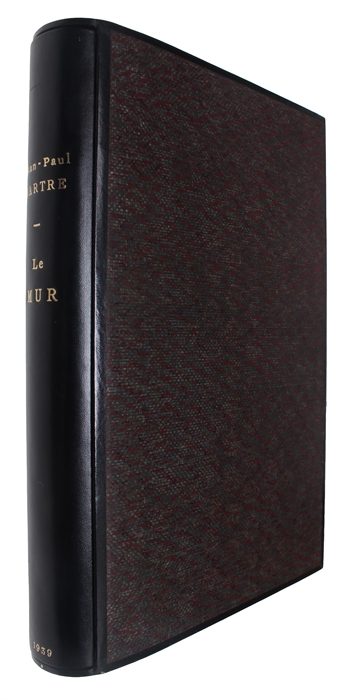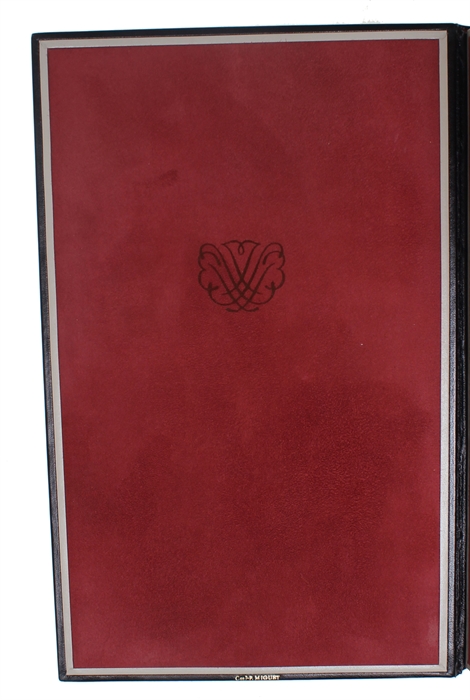THE WALL - NUMBERED COPY - MAGNIFICENTLY BOUND BY MIGUET
SARTRE, JEAN-PAUL.
Le Mur.
Paris, Gallimard, (1939).
Bound uncut with the original printed wrappers, also the back-strip, in a magnificent, elegant, and highly artistic black full calf binding with onlays of blood-red lacquered calf in stipes of varying thickness to all of front and back board as well as to spine, elegantly representing a "wall". Gilt author and title to spine. Inside of boards and recto and verso respectively of free end-papers coved with exquisite red suede and with white calf edges. Hand-sewn capital-bands in red and black. All edges gilt (also the uncut ones). Blindstamped super-ex-libris to inside of front board. Housed in an exquisite chemise with elegant patterned paper in red and grey tones and with black calf spine (same gilding as to binding) and edge, chemise covered with exquisite red suede on the inside, and an elegant slip-case of the same patterned paper, with black morocco edges. Binding signed to bottom of inside of front board: "C. et J-P. Miguet" and to bottom of inside of back board: "2003". A mint copy.
First edition, one of in all 110 numbered copies, of Sartre's first collection of short stories, which are generally accepted as Sartre's greatest existentialist works of fiction and the book as such as his greatest book of fiction.
The present copy is one of 20 "outside of commerce" ("hors commerce") copies on alfa paper. In all 110 copies appeared, 40 of which are on on pur fil and 70 on alfa (50 of them numbered 31-80, and 20 hors commerce numbered 81-100). This is number 86.
The collection "The Wall" contains the short story "The Wall", which is one of Sartre's most famous and most widely read stories. It coldly depicts a situation in which prisoners are condemned to death. The story takes place during the Spanish Civil War (July 1936 -April 1939). "The Wall" is probably the piece of fiction that best captures Sartre's central philosophical themes and is thus regarded as one of his most important works.
The title refers to the wall used by firing squads to execute prisoners, and the deep blood-red of the magnificient "wall"-binding by Miguet is thus particularly well chosen.
At the time of its appearance, "Le Mur" was well received, and because of it, Sartre won the price of the "Roman populiste" in April 1940. The work was fiercely attacked by Robert Brasillach in April 1939, but defended in "La Nouvelle Revue Francaise" in May 1939. Among the first reviews of it was Camus' in the "Alger républicain".
The publication of "Le Mur" contributed to giving Sartre a reputation of being obscene by those who did not admire his style and courageous writing. By those many of those who do admire him, this is considered some of the best that he ever wrote.
Contat & Rybalka: 39/21 (pp. (69)-71).
Order-nr.: 44689





